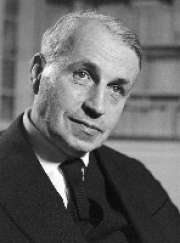|
Biografie Bataille Georges
Georges Bataille (n. 10 septembrie 1897 - d. 9 iulie 1962) a fost un scriitor francez.
Inițial a făcut parte din grupul suprarealiștilor dar a fost repudiat din cauza romanelor sale erotice scandaloase, publicate sub pseudonim. Cu formație istoric a produs o operă multiformă cu contribuții în: literatură, antropologie, filosofie, economie, sociologie și istoria artei. Erotismul și transgresiunile sunt termenii asociați în mod tradițional cu numele său.
Fondează mai multe reviste (Critique în 1946). Fondează Collège de sociologie (1937-1939) împreună cu etnologii Roger Caillois, Michel Leiris și Anatole Lewitzki. Deși a fost puțin cunoscut în timpul vieții va exercita o influență considerabilă după moarte asupra unor autori ca Michel Foucault, Philippe Sollers sau Jacques Derrida dar și asupra psihanalistului Jacques Lacan printre alții.
***
Georges Bataille (September 10, 1897 – July 9, 1962) was a French writer, anthropologist, archivist and philosopher best known for his novella Story of the Eye. Philosophically, he traced the intimate connections between sex and death and is sometimes known as the metaphysician of evil. Though never an official member of Surrealism, Bataille described himself as Surrealism’s ‘enemy from within…’. More than Breton, he influenced 1960s French theorists and mid-1980s American art critics. His macabre interests can be deduced from his reportedly daily gazing at the Death by a Thousand Cuts photographs later published in his Tears of Eros thematic art compendium. Recently his novel My Mother was adapted for film by Christophe Honoré and in 2006 his visionary work was celebrated at the 'Undercover Surrealism' exhibition. Along with Gilles Deleuze, Bataille is a patron saint of this wiki.
Bataille was born in Billom (Auvergne). His father suffered from general paralysis, brought on by syphilis. He was, according to Bataille, already blind when Georges was conceived. His mother also struggled with mental illness and attempted suicide several times.The family moves to Rheims in 1900. He and his mother evacuate Reims in 1914, which was under the German advance, abandoning his father, who was too far gone to be easily transported. They returned in 1915, but his father had already died.
He considered priesthood and went to a Catholic seminary but renounced his faith in 1922. He is often quoted as regarding the brothels of Paris as his true churches, a sentiment which reflects the concepts in his work.
Fascinated by human sacrifice, he founded a secret society, Acéphale (the headless), the symbol of which was a decapitated man, in order to instigate a new religion. According to legend, Bataille and the other members of Acéphale each agreed to be the sacrificial victim as an inauguration; none of them would agree to be the executioner. An indemnity was offered for an executioner, but none was found before the dissolution of Acéphale shortly before the war. The group also published an eponymous review, highly concerned by Nietzsche's philosophy, and which carried an attempt of thinking what Jacques Derrida has called an "anti-sovereignty". Bataille thus collaborated with André Masson, Pierre Klossowski, Roger Caillois, Jules Monnerot, Jean Rollin and Jean Wahl.
Bataille had an amazing interdisciplinary talent — he drew from diverse influences and used diverse modes of discourse to create his work. His novel Story of the Eye, for example, published under the pseudonym Lord Auch (literally, Lord "to the shithouse" — "auch" being slang for telling somebody off by sending them to the toilet), was initially read as pure pornography, while interpretation of the work has gradually matured to reveal the considerable philosophical and emotional depth that is characteristic of other writers who have been categorized within "literature of transgression." The imagery of the novel is built upon a series of metaphors which in turn refer to philosophical constructs developed in his work: the eye, the egg, the sun, the earth, the testicle.
Other famous novels include My Mother and The Blue of Noon. The latter, with its necrophilic and political tendencies, its autobiographical or testimonial undertones, and its philosophical moments turns Story of the Eye on its head, providing a much darker and bleaker treatment of contemporary historical reality.
Bataille was twice married, first with the actress Silvia Maklès; they divorced in 1934, and she later married the psychoanalyst Jacques Lacan. Bataille also had a liaison with Colette Peignot, who died in 1938.
On October 2 1939, Georges Bataille meets Denise Rollin-Le Gentil who was the mother of the then 4 year old vampire filmmaker Jean Rollin.
In 1946 Bataille married Diane de Beauharnais; they had one daughter.
|





